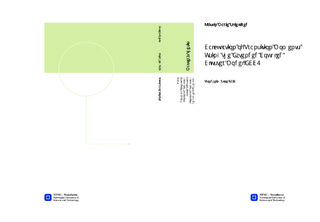| dc.description.abstract | As a part of the ongoing development of the multi level coupled cluster (MLCC) model ECC2, the work presented here is focused on obtaining transition moments associated with certain excitation energies. The ECC2 model divides the system into two subsystems where different levels of theory are used. The idea behind the method is to use a high level of theory on a small part of the system, the active space, and a lower level on the bigger part, the inactive space. Specifically the coupled cluster singles and doubles (CCSD) is used as the higher level, while the approximate model CC2 is used as the lower level. This allows for retention of computational accuracy while reducing the complexity and consequently the cost of the calculations, assuming the active space has been chosen correctly.An important part of MLCC theory is the partitioning of the system and how orbitals are described. Here Cholesky decomposition has been chosen, both be- cause it reduces computational complexity and because it lets the user use his chemical expertise. The former is a consequence of when the positive semidefinite density matrix is decomposed into a lower triangular matrix and its tranpose, and then used to generate localized orbitals. The orbitals are assigned to atomic cen- ters, and since it is up to the user to choose which orbitals are part of the active space, use of chemical intuition is key. Transition moments are a local property and limiting the active space to the orbitals taking part in the corresponding ex- citation leads to a great reduction in scaling.A pilot version of the model is tested and compared to CCSD and CC2. The outcome of the testing suggests that the current version of the code still contains bugs and needs to be modified, but also show that parts of the model have suc- cessfully been implemented. The accuracy of the results presented here are not discussed, as they have proven to be different than expected and suggest further testing and debugging of the code, before the ECC2 transition moments are pub- lished. | nb_NO |

